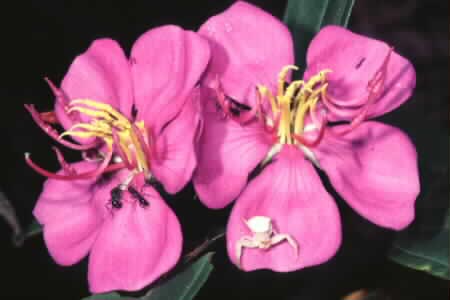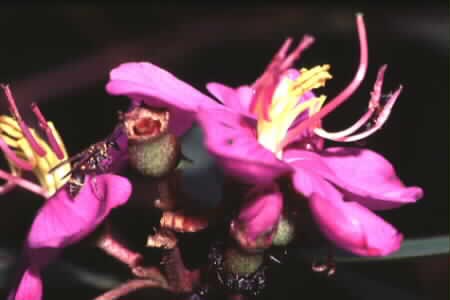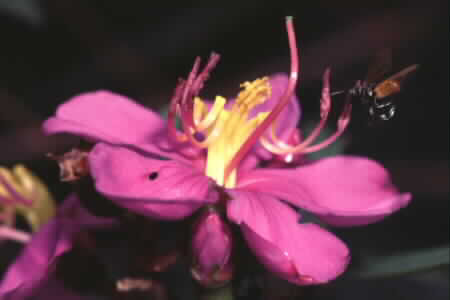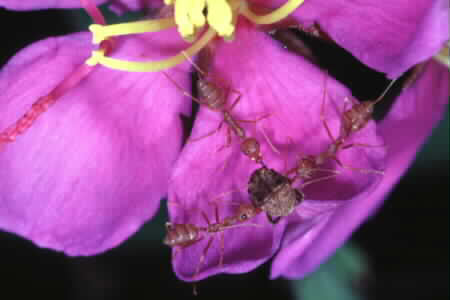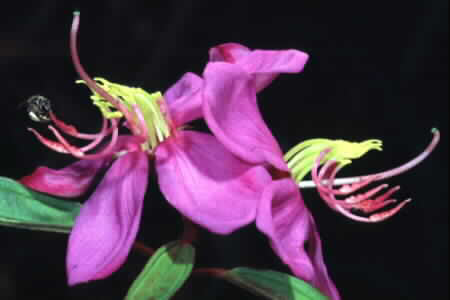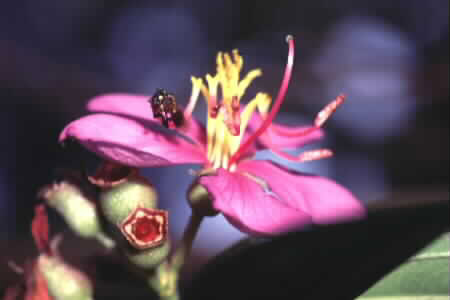






|
FOLDER 2: FLORAL WATERHOLES (THE STRAITS RHODODENDRON)
CLICK ON A THUMBNAIL IMAGE TO VIEW THE LARGER PHOTO
Floral waterholes
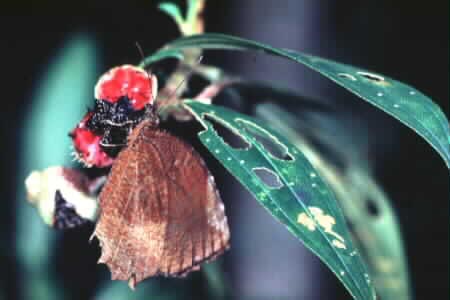 THE Straits Rhododendron is a flowering
shrub which grows to slightly over one metre tall. It is a pioneer species in land clearings
in the lowlands. With lallang and other weeds, it is among the first plant species to
sprout up in areas cleared for cultivation or construction. It also flourishes in bright
sunshine on the fringes of forests and plantations.
THE Straits Rhododendron is a flowering
shrub which grows to slightly over one metre tall. It is a pioneer species in land clearings
in the lowlands. With lallang and other weeds, it is among the first plant species to
sprout up in areas cleared for cultivation or construction. It also flourishes in bright
sunshine on the fringes of forests and plantations.
This hardy shrub bears berry-sized fruits which split when they ripen to
reveal a deep blue pulp dotted with numerous tiny seeds. The fruit is edible and is slightly
sweet. It leaves an ink-blue colour on the tongues of those adventurous enough to try it.
When I was a boy, I had to walk part of the way to school through an old rubber estate. Whenever
they were available, I would pop several of these fruit into my mouth ... an occasional titbit
to supplement breakfast. Some of my schoolmates also ate the fruit, and we would stick our tongues
out at each other to amuse ourselves. That was then one of life’s simple pleasures.
Birds, especially bulbuls, feed on the ripe fruit and spread the seeds with
their droppings. That is how the Straits Rhododendron, or sendudok in the Malay language,
so quickly establishes itself in open or waste ground. I have also seen butterflies “drinking” the
juice of the fruit.
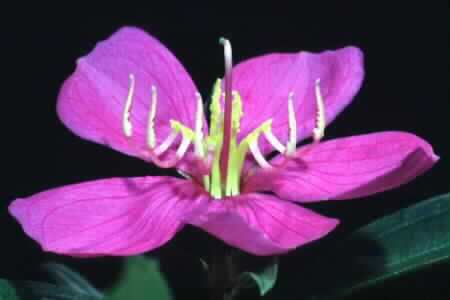 This common shrub is still a source of pleasure for me even though I have
stopped eating its fruit a long time ago. Its magenta or light purple flowers attract a variety
of insects, including butterflies, giving me the opportunity to photograph them as they settle
on the flowers to feed on the nectar.
This common shrub is still a source of pleasure for me even though I have
stopped eating its fruit a long time ago. Its magenta or light purple flowers attract a variety
of insects, including butterflies, giving me the opportunity to photograph them as they settle
on the flowers to feed on the nectar.
Sometimes, spiders wait on the petals or on the adjacents leaves to prey on these
insects. This reminds me of a scene in a wildlife documentary in which predatory big cats, like
the lion or cheetah, lie in ambush in the grass or bushes near a waterhole, ready to pounce on the
other animals that have come to quench their thirst.
During a nature outing, I make it a point to check out the flowers whenever
I find this shrub to see if there’s anything going on at these “floral waterholes”.
By the way, the Straits Rhododendron (Melastoma malabathricum) is not
really a rhododendron. It belongs to the family Melastomataceae whereas the rhododendron species
belong to the family Ericaceae. Why it is called the Straits Rhododendron I do not know.
(This was published in the November 1999 issue of Journal One.)
|
 
This page revised on 22 March 2003. Copyright © Chin Fah Shin
|







